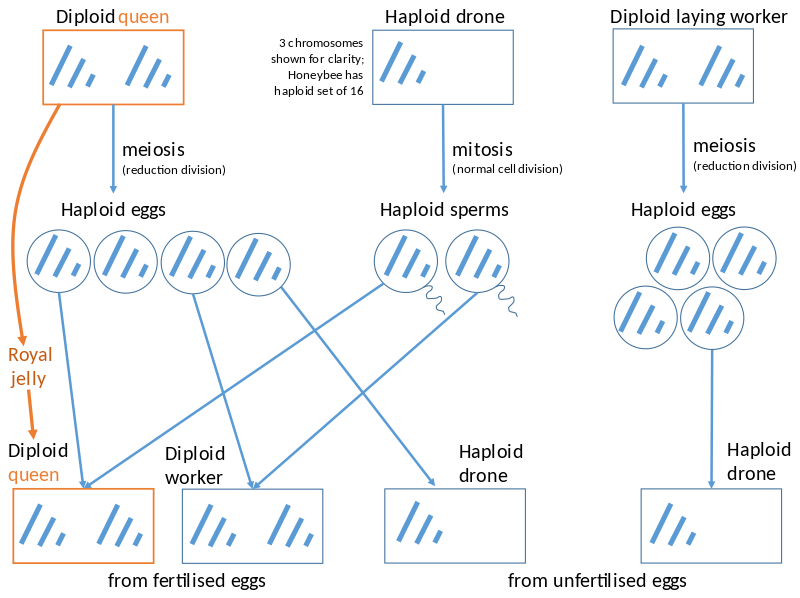So I'm having trouble wrapping my head around this. In haplodiploid insects, sisters are related by 75% on average due to all sharing 100% of dad's genetics and 1/2 of mom's. (males are produced from haploid eggs)
The question I have is, if you take a son of a queen and mate her with her own son, what is the genetic relatedness of her resulting daughters to one another?
Here is an illustration of the haplodiploid system in insects.

Thanks in advance!

